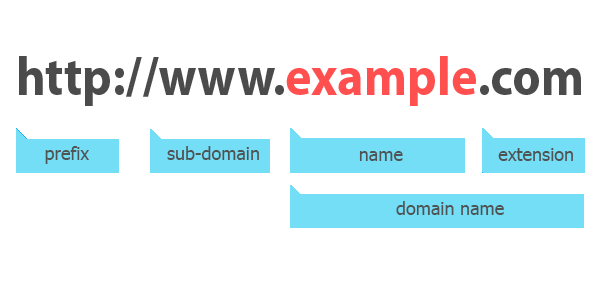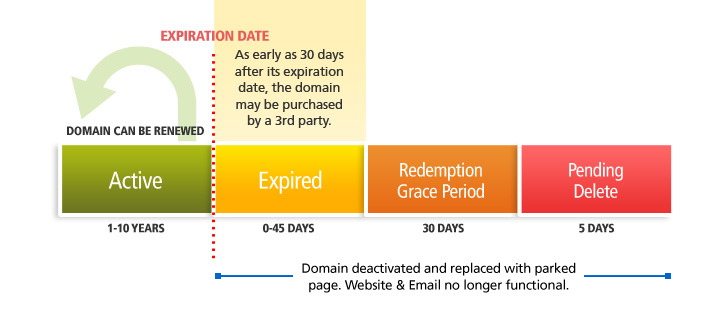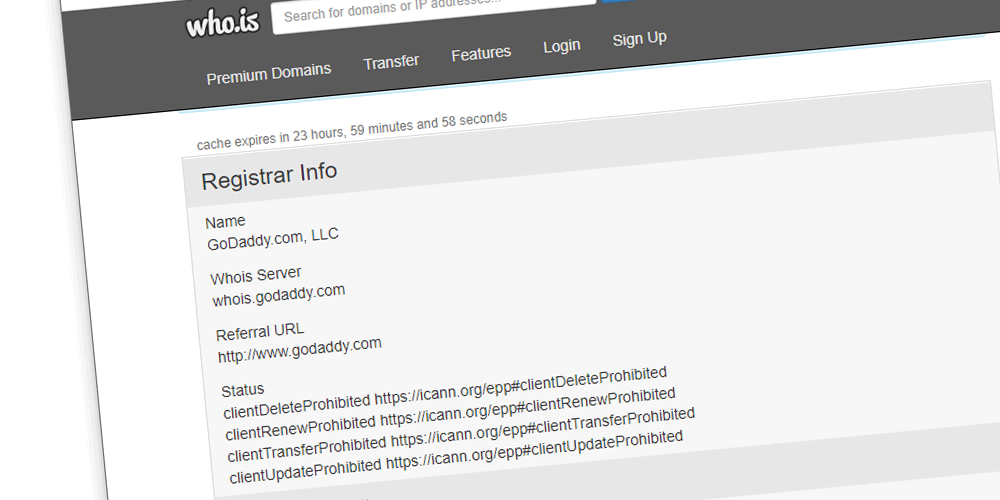While it's safe to say that all domain names are created equal, they are no longer equal when they are purchased.
It all began through a registry of database that host all domain names and the associated registrant information in the top-level domains (TLDs) of the Domain Name System (DNS) of the internet.
This enables third parties entities to request administrative control of a domain name. But domain names they can ask for control, are all managed under a hierarchy headed by the Internet Assigned Numbers Authority (IANA), which manages the top of the DNS tree by administrating the data in the root nameservers.
Those who wish to buy a domain name can do so through a registrar. The company manages the reservation of internet domain names, in accordance with the guidelines of the designated domain name registries.
Buyers will then register the domain name they want, with the registration information maintained by the the domain name registries, which contract with domain registrars to provide registration services to the public.
When this happens, the buyers that select a registrar, make that registrar the designated registrar for the purchased domain name.

Because of this, "purchasing" a domain name does not mean "owning" that domain.
Buying one simply means "renting it", as when the time expires, the control of the domain is no longer at the hand of the buyer.
Hundreds of thousands of new domain names are registered every single day on average across all TLDs. And also on every single day, tens of thousands of them are expiring.
So what happens when a domain name expires?
Short answer: a lot.
Long answer: it will have to pass several steps, including several periods of times.
This is meant to give the registrant to chance to renew it, or else, let the public buy it.
Shortly before the expiry date, the registrar will send numerous warnings and alerts, through all methods the registrants previously provided to the registrar.
This is because registrars are required to send renewal reminders 30 days before, and then five days before and five days after the expiration of a domain name. Registrars are also required to provide the methods and ways to renew expired domains on their website.
When everything fails and the domain expires, the registrar will automatically remove the domain's nameserver.
As a result of this, the domain will become inactive immediately, and all services attached to it will cease to function.
At this point, the domain name stops resolving.
The next day, the domain enters what's called the "grace period"
At this time, the registrant of the domain cannot do anything with the domain.
However, the domain will remain available for reactivation at the owner's regular domain rate. They can do this through the usual renewal process.
In other words, at this time, the owner still has the chance to reactivate the expired domain without too much pain.
However, this process is not risk-free, as the registrar has the ability to perform a “direct transfer” during that period, meaning that the domain could be transferred to another party.
But in most cases, the registrar will park the domain.

It's worth noting that certain domain names are auto-renew only and cannot be renewed manually. For these domains, there is no grace period. Once they’re expired, it’s not possible for the owner to recover them.
It should also be noted that different registrar offer different ways to renew expired domains. There is also no guarantee on how long this grace period will end, as the registrar may dispose of it at any time according to the registration agreement.
After grace period, comes the "redemption period."
During this stage, the registrar can display ads on the domain's parked page.
It may also inform other parties about its intention to auction the domain.
Those who wish to own the domain, can express their interest by contacting the registrar. If someone else bids and wins the domain, the domain name registration will be transferred to that new owner.
If the auctions end with no bidders, the domain will be returned to the registry.
At this time, the registrar issues a delete request to the registry.
Registrant can recover the domain, but can only retrieve the domain through a manual process.
The registrant may have to pay a mandatory fee on top of the renewal price, if they wish to renew the expired domain at this stage.
It's worth noting that the name "grace" and/or "redemption" period may differ from one registrar to another.
During this time, the domain’s WHOIS record would indicate the statuses redemptionPeriod and/or clientTransferProhibited.
And lastly, the following period is often referred to as the "pending delete" period.
During this period, which only last several days, the domain enters the PendingDelete period, where the registrar holds the domain to itself and cannot be recovered by anyone.
Once the registry deletes the domain, it will soon be marked available on a first-come first-served basis for anyone to purchase as a new domain.
All domains under the ICANN regulations follow the rules mentioned above.
TLDs outside the regulations, such as ccTLDs (country-code Top-Level Domains) and gTLDs (generic Top-Level Domains) may not follow the rules, and may or may not provide a grace period and a redemption period.
If they do, the length of the period may be different.
These special domains are known to have special renewal rules.

It's worth noting that it's possible to lose domain names after failing to renew them, but regain them afterwards after filing a dispute. But this is not always a guarantee.
This is why failing to renew domain names can be a hassle, for whoever wish to retrieve them.
Everything that happens after someone failed to renew a domain name for whatever reasons, can be referred to as the “domain name expiry cycle.”
Understanding the above domain life cycle should help domain registrants to better manage their domain names that are essential to them and/or their organization. Understanding this should also ensure that they do not let any of those essential domains slip away with nothing they can do about it.
Understanding the domain name expiry cycle should also help registrants avoid unnecessary costs from domain name disputes or increased registration fees. Furthermore, knowing how the stages are represented in the domain’s WHOIS records can provide intelligence to back up business decisions, such as which domains to use and not to use.
This is because cybersquatters are always on the lookout for expired domains.
These people seek financial gains from previous owners who failed to renew their domains, but wish to get them back after they expired.
In the process, cybersquatters can ask exorbitant amounts in return for the domain names’ transfer.
For those who wish to buy expired domains, may need to check the domains they have in mind; browse their historical WHOIS details as part of a background check, and look to see whether or not the domains have been reported malicious, or placed under clientHold status.